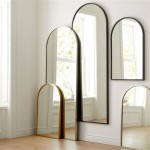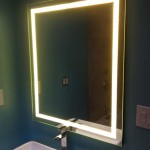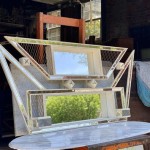Does a Convex Mirror Produce a Real Image?
Convex mirrors, characterized by their outwardly curved reflecting surface, are known for their ability to produce a wide field of view. This characteristic makes them invaluable for applications like security mirrors in shops and side-view mirrors in vehicles. However, the nature of the images they produce is distinct from those formed by plane or concave mirrors. This article explores the properties of the images formed by convex mirrors and addresses the question of whether they can produce real images.
Understanding how images are formed requires a basic grasp of the behavior of light rays. When light rays from an object strike a mirror's surface, they reflect according to the laws of reflection. These reflected rays determine the location and characteristics of the image. A real image is formed when reflected rays converge at a point. This image can be projected onto a screen. Conversely, a virtual image is formed when the reflected rays appear to diverge from a point behind the mirror. A virtual image cannot be projected onto a screen.
The curvature of a convex mirror causes incident parallel light rays to diverge after reflection. This divergence is a fundamental characteristic that dictates the type of image formed. No matter the object's distance from the mirror, the reflected rays will always spread outwards. To locate the image, these diverging rays are extended backward, behind the mirror's surface. The point where these extended rays appear to intersect is where the virtual image is formed.
Considering the diverging nature of the reflected rays, it becomes evident that a convex mirror cannot form a real image under normal circumstances. Since real image formation requires the convergence of reflected rays, and the reflected rays from a convex mirror always diverge, the possibility of a real image is excluded. The image formed by a convex mirror is always virtual, upright, and diminished in size. The diminished size contributes to the wider field of view, allowing the observer to see a larger area than what a plane mirror of the same size would reflect.
The virtual nature of the image formed by a convex mirror can be further understood by considering the focal point. The focal point of a convex mirror is the point where parallel rays appear to diverge from after reflection. This point is located behind the mirror, and it is considered virtual. Since the image is formed through the apparent intersection of diverging rays behind the mirror, it shares the virtual nature of the focal point.
The properties of the image formed by a convex mirror – virtual, upright, and diminished – are crucial for its various applications. In security mirrors, the wide field of view allows a single mirror to cover a large area of a store, aiding in surveillance. Similarly, in car side-view mirrors, the convex shape provides a broader view of the area behind and beside the vehicle, enhancing driver safety. The "objects in mirror are closer than they appear" warning on these mirrors highlights the image's diminished size, reminding drivers to account for the difference in perceived distance.
While a convex mirror itself cannot produce a real image, a real image can be formed if the reflected rays from a convex mirror are subsequently reflected by another mirror, particularly a concave mirror, under specific conditions. This scenario involves a two-mirror system and doesn't contradict the fundamental principle that a convex mirror alone cannot produce a real image. The initial virtual image formed by the convex mirror acts as the object for the second mirror. If this virtual object is placed within the focal length of a converging mirror, a real image can be formed.
The distinction between real and virtual images is fundamental in optics. Understanding this distinction is crucial for comprehending how different types of mirrors, including convex mirrors, function and contribute to various applications. The unique properties of the images formed by convex mirrors, specifically their virtual and diminished nature, make them invaluable for enhancing safety and security in a range of everyday situations.
The consistent formation of virtual images by convex mirrors is a direct consequence of their outward curvature and the resulting divergence of reflected light rays. This characteristic, while precluding the formation of real images under normal circumstances, is precisely what makes convex mirrors suitable for their specific applications. The wider field of view provided by the diminished virtual image is the key advantage that differentiates convex mirrors from other types of reflecting surfaces.
Can A Convex Mirror Produce Real Image
Can A Convex Mirror Form Magnified Image Quora
Can A Convex Mirror Form Real Image Quora
Can A Convex Mirror Produce An Image Between F And C Quora

Can A Convex Mirror Produce Real Image When The Object Is Virtual And Vice Versa Concave If Yes How Will It Be Possible Why Quora
Under What Conditions Can A Convex Mirror Produce Real Image Quora

Convex Mirror Image Formation Conditions Ray Diagram Uses
Can A Convex Mirror Produce Real Image When The Object Is Virtual And Vice Versa Concave If Yes How Will It Be Possible Why Quora

Real Image Wikipedia

Image Formation By Convex Mirrors








